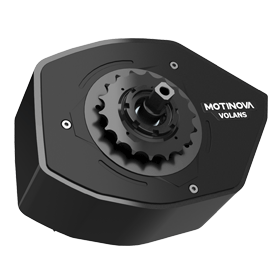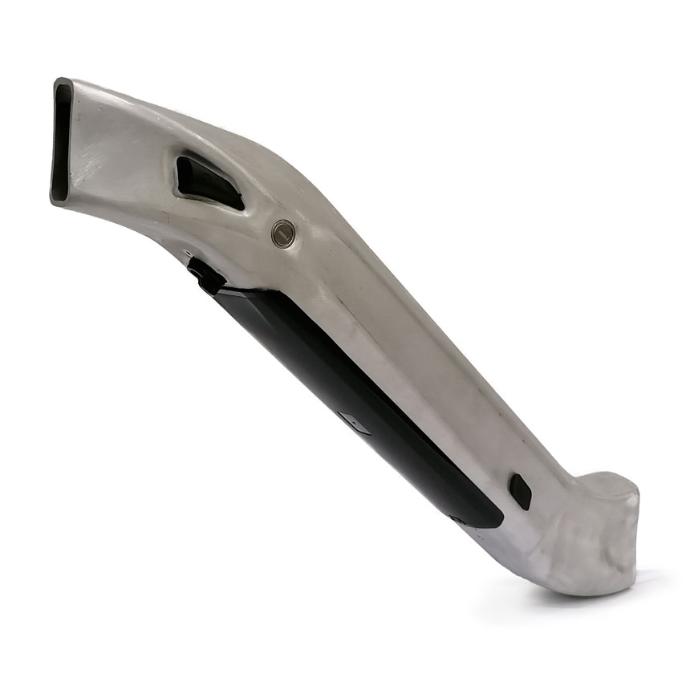The Econo MTB is a durable bike intended for longer journeys through hills and valleys, paved roads, field paths and off-road, which at first glance does not differ significantly from other hardtail mountain e-bikes from other manufacturers. It is characterized by a modern design, modern geometry, the wiring is hidden in the frame. With a powerful 250 W motor that produces an enviable 75 Nm of torque, it is possible to drive even on steep forest trains. The equipment of the bike is surprisingly good, four piston brakes help to stop effectively during faster descents, wide tires with a not too rough profile are suitable for comfortable driving on asphalt roads as well as on forest terrains. It has a reliable Shimano Deore gear set with a gear ratio that facilitates very steep climbs and helps cycling above 30 km/h.
Tested and wrote: Niky Golavšek
Bike: E-kolo Econo MTB
Motor: Motinova Volans
Battery: Econo baterija 880Wh
Path: Sl. Bistrica - Pohorje Trije Kralji - Ruše- Kamnica - Maribor - Pohorje Areh - Trije Kralji - Sl. Bistrica
Grounding: Cesta, makadam, gozd
Weather: Sonce, oblačno, dež
Date: 1.5.2021
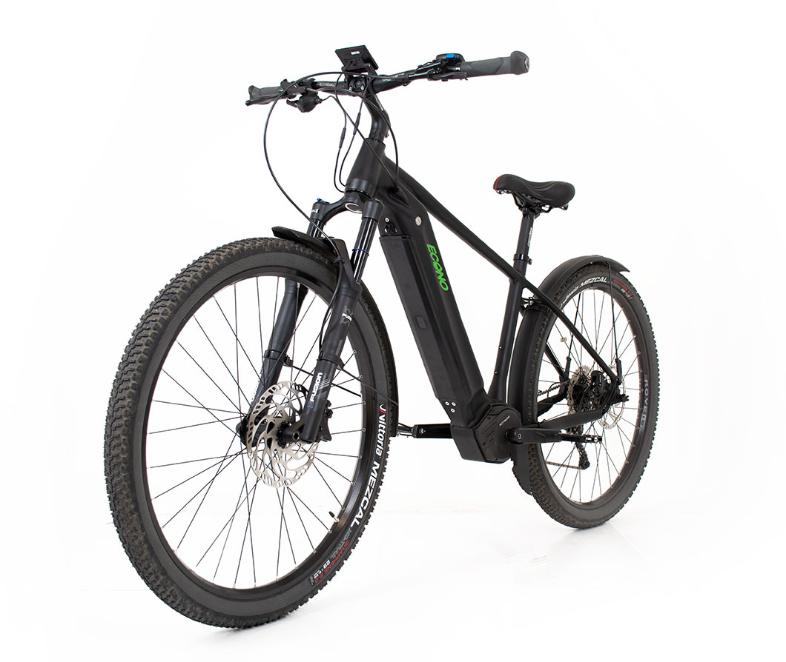
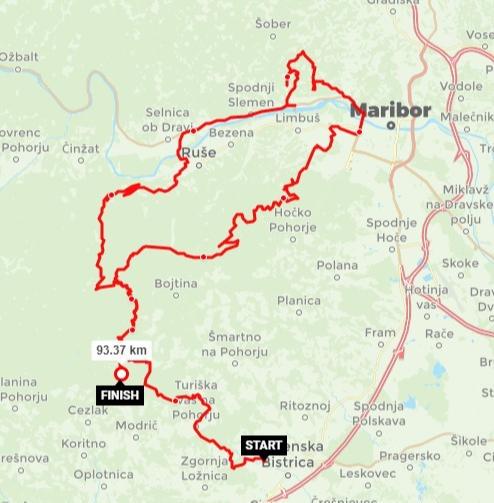
Description of the ride and route
The route began in the flat area of Slovenska Bistrica. I started cycling in Eco mode, because I knew that it would be necessary to save energy as much as possible, because I had a long journey through Pohorje and back. Slovenska Bistrica is a town below Pohorje, so the plain quickly turned into an ascent, which does not subside until RTC Trije Kralji. On this 15 km long route, I mainly cycled in Normal mode, but on steep climbs, I switched to Sport mode for a short time. It only took me an hour to climb to RTC Trije Kralji and I used very little energy. I got just warmed up to continue driving. For comparison, I should mention that with an ordinary bicycle I need 2 hours for the same route and I am quite exhausted and completely sweaty at the top.
I continued my journey towards the Šumik waterfall in Pohorje on a road where the configuration of the terrain is moderate, i.e. with easier ascents and descents of the terrain, so that the Normal mode was sufficient for an average speed of over 20 km/h and I covered the 7 km long route in just over 20 minutes.
This was followed by a descent into the valley to Ruše. On the descent, we have nothing to do with the electric motor, but the four-piston Shimano brakes came to the fore, with which I have a lot of experience, and wide tires with excellent grip on macadam and later in the valley on asphalt. With confidence in the high-quality braking system and the excellent grip of the tires, I reached speeds of up to 50 km/h on the descent. The descent ended with a wonderful ride along the Lobnica stream. The first part of the trip was behind me. So from Slovenska Bistrica to Ruše via Pohorje in just 2 hours? Very impressive, isn't it? Even more impressive was the battery consumption. In the Ruše center, the second line disappeared from the screen, which meant that I was in the middle of the battery consumption. The low consumption was influenced by my economical driving and of course the battery capacity with an impressive 880 Wh.
IFrom Ruš, where I crossed the river Drava, I then cycled about 10 km on a mainly flat path to Brestrnica. On this route, the Normal mode was sufficient, as I cycled at an average speed of 22 km/h. I decided to explore the terrain on the slopes of Kozjak a little more, so I continued the drive to the village of Medič above Kamnica, where I visited the Panorama viewpoint. For this wonderful view of the city of Maribor and the river Drava, it was necessary to overcome quite steep climbs, but with the Sport option, this was not a problem, despite the fact that behind me was already quite a long road with no shortage of slopes.
Half of the planned route was behind me. The battery indicator on the screen still showed half of the battery used, which meant that there would be just enough power to get back home. Nevertheless, I will have to drive quite sparingly so that I don't run out of battery power, as I have a few more climbs ahead of me. I went to the foot of Pohorje to the place Pekre, where I started to climb towards the church of St. Areh on Pohorje. I covered the 15 km climb in an hour. I mainly cycled in Normal mode, although I also used Eco mode when possible. At the top, the battery consumption indicator showed only one more bar. I have to admit that I was a little worried whether I would be able to complete the trip with the help of an electric motor or whether I would have to use my own power, which was already waning after 81 km of driving.
From the Church of St. Areh, there was a descent towards the Bajgot parking lot above the Šumik Waterfall. Then I branched off to the left in the direction of Treh Kraljev. In Normal mode, I returned the same way I came. Only 8 km of easy ascent separated me from the turnoff to Treh Kraljev.
Unbelievable! I saw Hotel Jakec on Trije Kralji. The battery indicator started flashing, which meant that I was running on "fumes", so to speak. But it doesn't matter, because the only thing waiting for me to get home was the descent into the valley. I descend into the valley along already known forest footpaths, of course without the help of an electric motor.

The proceeds of the trip
Length 100 km, average speed 20 km/h, ascent 2910 m, descent 2009 m, driving time 4.50 h.
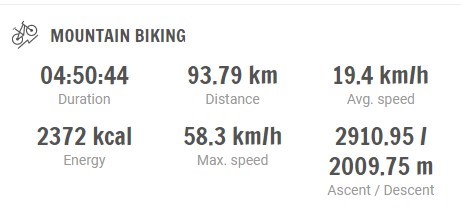
Engine usage data
Using driving assistance levels. Eco: 4%, Normal: 85%, Sport: 10%, Turbo: 1%.
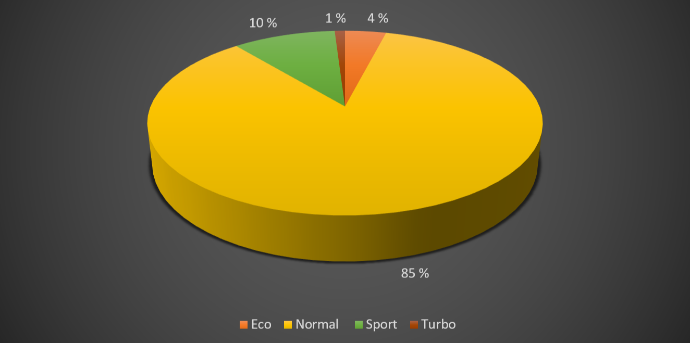
Conclusion and equipment
Econo MTB is a stylish mountain e-bike for everyday users as well as for adventurers. With an enviable 880 Wh battery, the bike takes you wherever you want, be it paved bike paths, gravel paths or forest trails. Its capacity is sufficient to climb the Pohorje Mountains twice, which means that you can overcome up to 3,000 meters of altitude with one charge. The Econo MTB is perfectly manageable and very stable. Comfort is not left behind on the bike, as it is provided by a very soft seat, spring forks and handlebar support adjustable in height and inclination.
Motor Motinova Volans
When it comes to the engine, it's important to realize that it's not just about how much Nm of torque it produces, but also how it feels to drive, the smoothness of acceleration and the upgrade options. The Econo test bike uses a Motinova 250 W electric motor with 75 Nm of torque. This motor received the highest rating in the testing of electric motors in bicycles in 2020.
The mission of the Motinova company is to create a superior electric drive for bicycles that will provide the user with a perfect riding experience. The motor has four levels of assistance. The initial Eco level is admittedly the friendliest to battery consumption, but this option is especially suitable for flat driving and for very long distances where we need to save energy. The second assist level, Normal, is a bit more lively, suitable for long, hilly routes. The third Sport level is suitable for use on medium-long distances and more difficult climbs. A speed of up to 25 km/h is reached on the plain without any problems. On climbs, the bike is quite bouncy and gives the feeling of wind in your hair. The last level of assistance is Turbo, which does not make sense to use on the flat, but is very welcome on steep climbs. On very steep climbs, where we have to use first or second gear, we can reach a speed of around 11 km/h in Turbo mode.
Integrated Econo battery
The shape of the battery is dynamic and stores the electrical energy the motor needs to operate. The amount of storage is called capacity. The larger the battery capacity, the more kilometers you will be able to cycle with the help of the motor. This battery has a capacity of 880Wh and can be used for more than 200 km in optimal conditions. Smaller capacities of 500 Wh, 630 Wh, 760 Wh are also possible. Charge the battery with an econo charger that has electronics that monitor and take into account charging requirements and thereby increase charging safety. The charger also charges the battery using the CC-CV method, which means that it intelligently switches between charging with constant current and charging with constant voltage, which allows for faster charging.
Equipment
One of the first things you notice on an e-bike is the screen in the set with the control unit, it is large, legible, with a light. The screen shows the current speed, battery consumption, trip length and the total number of kilometers traveled.
Because safety comes first, the bike has four Shimano MT-520 piston brakes, which provide considerable stopping power. The brakes work very well even in wet conditions. I use the same brakes myself on my enduro bike, so I used them without any problems when descending on the forest floor even at speeds of up to 30 km/h.
An important role in the comfort of the bike is played by the seat. It is very comfortable and does not require padded pants, which means that you will not have a sore butt after using it.
If the buttocks are grateful to the seat, the arms are grateful to the x-fusion air fork. 120mm forks with compression and rebound adjustment are very responsive when overcoming roots and rocks. They also have a lock that helps improve pedaling efficiency on hard surfaces and when climbing.
The drivetrain includes a Shimano Deore derailleur complete with 11 regular cogs in the 11-42 ratio. With this ratio, you can cycle from 5 km/h up to 30 km/h.
The test bike was fitted with Vittoria Mezcal tires, which are designed for all-round riding. They perform excellently on asphalt, macadam and forest floor. But they are not suitable for wet, muddy ground.
Sign up for the newsletter and be the first to know about delivery
The bike will be available at the end of 2021 in various configurations. A male and female model will be available in matte black. A large selection of batteries will also be available
different capacities: 500 Wh, 630 Wh, 760 Wh and 880 Wh.



